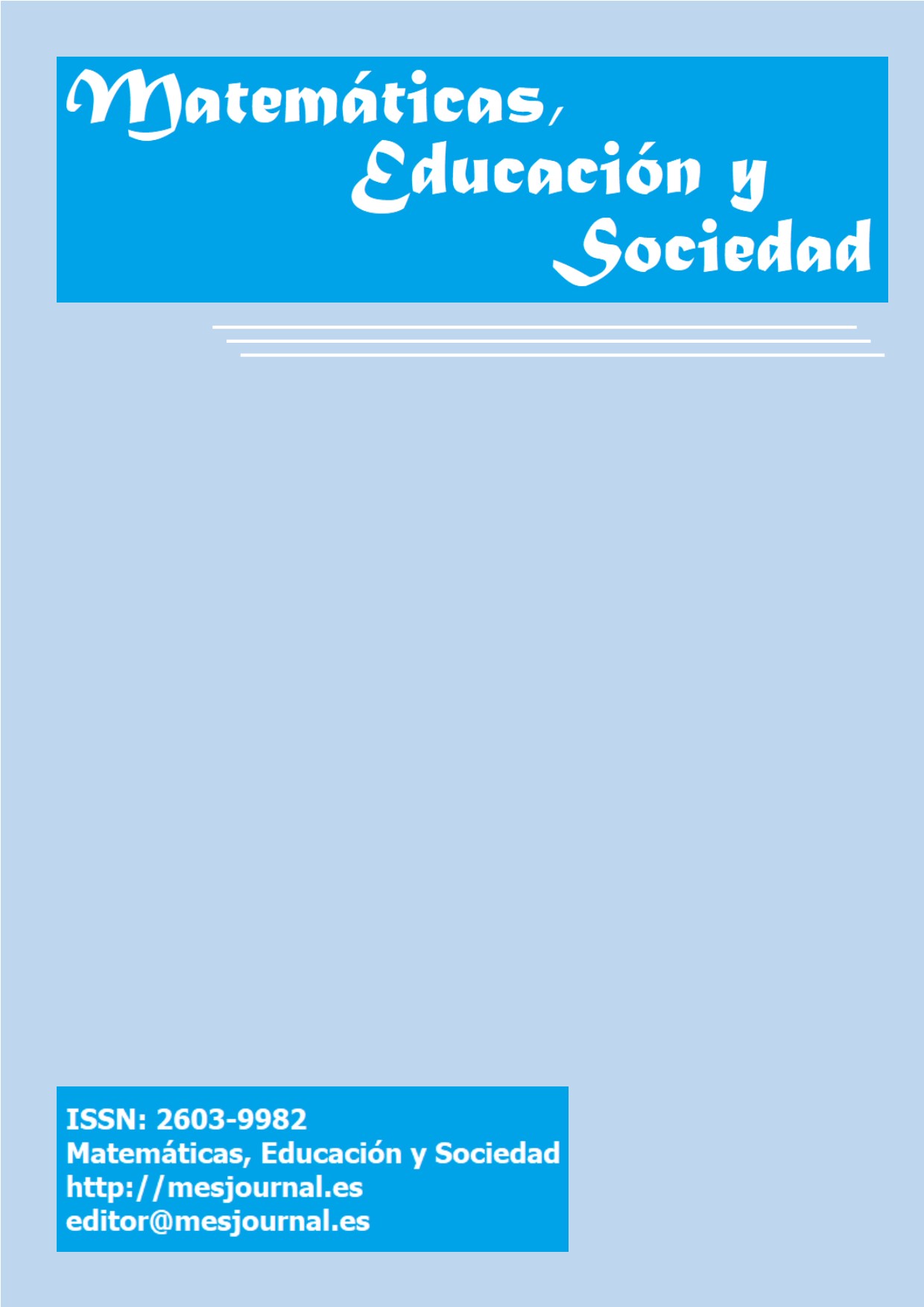The Context-Based Approach methodology in STEM: meteorological data modeling
Main Article Content
Abstract
GeoGebra is a dynamic math software for all educational levels that brings together geometry, algebra, spreadsheet, graphs, statistics and calculus into one easy to use program. This study focuses on how this resource can be used to improve the teaching of STEM in Engineering training, through a didactic proposal that follows a Context-Based Approach methodology, where the context is a real need for a company that can be translated to the Engineering classroom to implement good practices in STEM teaching. The specific purpose is that, based on specific observations, we need to show information about the density and height of clouds. For this we must calculate the points that define an area of clouds and find a polygonal representation of the surface that it occupies.
Downloads
Article Details
This work is licensed under a Creative Common License (CC BY 3.0 ES)
References
Artigue, M. (2002). Learning mathematics in a CAS environment: The genesis of a reflection about instrumentation and the dialectics between technical and conceptual work. International Journal of Computers for Mathematical Learning, 7, 245–274.
Artigue, M., Drijvers, P., Lagrange, Jb, Mariotti, M. A., y Ruthven, K. (2009). Technologies numériques dans l'enseignement des mathématiques, où en eston dans les recherches et dans leur intégration? En C. Ouvrier-Buffet y M.J. Perrin-Glorian (Eds.), Approches plurielles en didactique des mathématiques; Apprendre à faire des mathématiques du primaire au supérieur: quoi de neuf? (pp. 185–207). Paris: Université Paris Diderot Paris 7.
Bronfenbrenner, U. (1979). The ecology of Human Development. Cambridge: Harvard University Press. (Trad. Cast.: La ecología del desarrollo humano. Barcelona: Ediciones Paidós, 1987).
Centroide. (2017) [En línea]. Disponible en: http://pier.guillen.com.mx/algorithms/07-geometricos/07.8-centroide.htm. [Accedido: 14-jun-2017].
Doerr, H. M., y Zangor, R. (2000). Creating meaning for and with the graphing calculator. Educational Studies in Mathematics, 41, 143–163.
Fraser, B. J., Tobin, K., y McRobbie, C. J. (Eds.) (2012). Second international handbook on science education. New York: Springer.
Henderson, C., Beach, A., y Finkelstein, N. (2011). Facilitating change in undergraduate STEM instructional practices: An analytic review of the literatura. Journal of research in science teaching 48(8), 952–984.
Hirsch, C.R. and McDuffie, A.R. (Ed.) (2016) Annual Perspectives in Mathematics Education 2016: Mathematical Modeling and Modeling Mathematics. National Council of Teachers of Mathematics Editors
Hohenwarter, M., Borcherds, M., Ancsin, G., Bencze, B., Blossier, M., Delobelle, A., . . . Sturr, G. (2017). GeoGebra (Version 5.0.352.0-3D) [Programa informático]. Linz, Austria: International GeoGebra Institute. Recuperado de http://www.geogebra.org/
Hohenwarter, M., y Hohenwarter, J. (18 de septiembre de 2009). Geogebra. Obtenido de: www.geogebra.org
Kelly, A.E., Lesh, R.A. y Baek, J.Y. (Eds.). (2008). Handbook of design research methods in education innovations in science, technology, engineering, and mathematics learning and teaching. New York: Lawrence Erlbaum Associates. Disponible en http://www.routledgeeducation.com/books/Handbook-of-DesignResearch-Methods-in-Education-isbn9780805860597
Kendal, M., y Stacey, K. (2002). Teachers in transition: Moving towards CAS-supported classrooms. ZDM, The International Journal on Mathematics Education, 34(5), 196–203.
Lagrange, J.-B., y Ozdemir Erdogan, E. (2009). Teachers’ emergent goals in spreadsheet based lessons: analyzing the complexity of technology integration. Educational Studies in Mathematics, 71(1), 65–84.
Lagrange, J.-B., Artigue, M., Laborde, C., y Trouche, L. (2003). Technology and mathematics education: A multidimensional study of the evolution of research and innovation. En A. J. Bishop, M. A. Clements, C. Keitel, J. Kilpatrick, y F. K. S. Leung (Eds.), Second international handbook of mathematics education (pp. 237–269). Dordrecht: Kluwer.
Li, Q. (2007) Student and teacher views about technology: A tale of two cities? Journal of research on Technology in Education, 39(4), 377–397.
López; C.(2011). Mejores Prácticas en la Enseñanza de las Matemáticas: La integración de las TICs. Revista: SCOPEO, El Observatorio de la Formación en Red. Boletín SCOPEO nº 34,. pp. 1. En línea: http://scopeo.usal.es/index.php?option=com_content&view=article&id=915&Itemid=7314/01/2011.
Losada, R. (2007). GeoGebra: la eficiencia de la intuición. Gaceta de la Real Sociedad Matemática Española, 10(1), 223–239
Monaghan, J. (2004). Teachers’ activities in technology-based mathematics lessons. International Journal of Computers for Mathematical Learning, 9, 327–357.
NCTM (Ed.). (2000). Principles and standards for school mathematics. National Council of Teachers of Mathematics: Reston, Virginia.
Pant, T. (2012, January). UNESCO supports ICT in education master plan. Kathmandu UNESCO Newsletter, 3(3).Recuperado de http://unesdoc.unesco.org/images/0021/002126/212608e.pdf
Reeves, T. (2007) Design research from a technology perspective. En J. Van den Akker, K. Gravemeijer, S. McKenneymy N. Nieveen (Eds.), Educational design research (pp. 86–109). London: Routledge.
Ritz, J. M., y Fan, S. C. (2015). STEM and technology education: international state of the art. International Journal of Technology and Design Education, 25(4), 429–451.
Savelsbergh, E. R., Prins, G. T., Rietbergen, C., Fechner, S., Vaessen, B. E., Draijer, J. M., y Bakker, A. (2016). Effects of innovative science and mathematics teaching on student attitudes and achievement: A meta-analytic study. Educational Research Review 19, 158–172.
Straesser, R. (2001). Cabri-Geometry: Does Dynamic Geometry Software (DGS) Change Geometry and its teaching and learning. International Journal of Computers for Mathematical Learning, 6, 319 -333.

